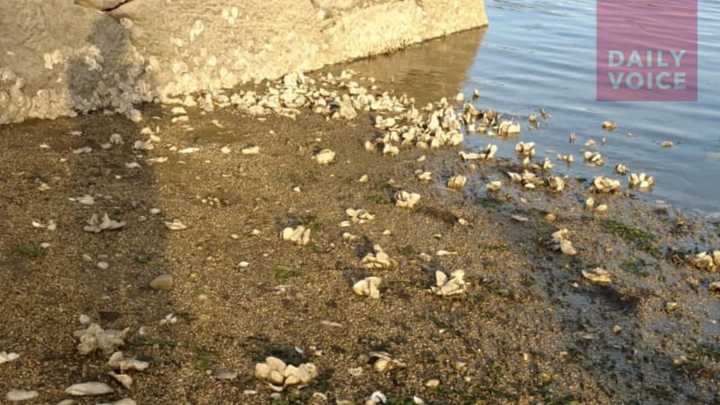MAMARONECK, N.Y. -- State environmental officials say this summer's excessive hot temperatures, and extended heat waves -- which caused a major local algae bloom -- are the likely source of a massive fish kill in Mamaroneck Harbor and other New York waterways.
On Tuesday, the remains of dead oysters and other seafood were washing up on a public beach at Harbor Island Park.
Village of Mamaroneck officials reported on Monday that they'd received numerous complaints about dead fish floating near Harbor Island Park -- in Mamaroneck Harbor and elsewhere in Long Island Sound. State and local officials agreed that a sudden, steady change in oxygen in the water may be killing fish.
Wendy A. Rosenbach, a regional spokeswoman with the state Department of Environmental Conservation in New Paltz, N.Y., said an exact cause is unknown, but confirmed that the fish kill reports in Mamaroneck are consistent with others being reported from other New York and New Jersey waterways.
Rosenbach told Daily Voice: "DEC was recently made aware of a fish kill in Mamaroneck Harbor. The exact cause or extent of the of the fish kill is unknown, but fish kills tend to occur in warmer months when the water’s capacity for dissolved oxygen is reduced and fish metabolic rates increase."
"In these conditions, fish caught in these low dissolved oxygen areas can asphyxiate and a fish kill results," Rosenbach said. "In recent weeks a number of fish kills of Menhaden have been reported in Long Island and New Jersey."
On Tuesday evening, Megan McCarthy, a Daily Voice community advisor and local Coldwell Banker agent, shot beachfront photographs of the devastation. While the massive fish kill and dead oyster remains were not visible from Route 1 (Boston Post Road) in the Village of Mamaroneck, they very real at the water's edge at Harbor Island Park.
On Monday, village officials sent an email blast to local residents and business owners, that said read: "The Village of Mamaroneck has received a number of inquiries about fish-kills, or fish die-offs in Mamaroneck Harbor."
"Fish kills generally occur in warmer weather, when algae growth increases, then dies off and is consumed by decomposing organisms, which give off waste by-products, subsequently lowering the oxygen levels in the water that fish need to breathe," Mamaroneck officials said in their email.
"Natural conditions often are a factor in fish kills, such as extreme temperatures or sudden temperature changes, diseases or parasites, naturally occurring low oxygen levels, or algae blooms," the village email continued. "The most likely anthropogenic cause is a drastic drop in dissolved oxygen in the water in association with an algae bloom triggered by fertilizer, wastewater, and/or stormwater flowing into the harbor from upstream."
Click here to follow Daily Voice Mamaroneck and receive free news updates.





